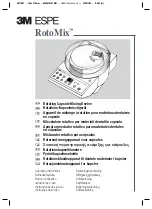
29
1. Disengage the clutch operating lever and remove the old facing plates (30).
2. Insert the new facing plates (three segments) in between the clutch body (34) and the pressure plate (29),
and center the facings as close as possible.
3. Lock the clutch facings between the pressure plates as follows:
A. Remove the drive ring (31) from the engine flywheel so that it can be used to center the fac-
ings.
B. With the clutch assembly resting on a workbench, turn the clutch adjusting ring COUNTER-
CLOCKWISE until the pressure plate (29) almost contacts the clutch facing (30).
C. Place clutch driving ring over clutch facings with teeth in driving ring in mesh with teeth of
clutch facings, and locate driving ring centrally relative to the pressure plate and clutch body.
NOTE:
If driving ring is not properly located relative to the pressure plate and
clutch body, the clutch cannot be assembled to the flywheel as the teeth
of clutch facings will not enter the teeth of driving ring even though the
clutch drive shaft enters the pilot bearing.
D. Engage the clutch by applying pressure on top of release sleeve and collar assembly (20) and
lock clutch facings between the pressure plate and clutch body. If clutch facings are still free
to move, disengage the clutch and turn adjusting ring COUNTER-CLOCKWISE just enough to
lock the clutch facings in place when clutch is engaged.
NOTE:
The clutch must now be engaged until the clutch assembly is attached
to the engine.
4. Remove clutch driving ring (31) from the clutch facings and attach it to the flywheel with the specified
bolts and lock washers.
5. Before re-installing clutch onto engine lubricate the release sleeve (21) through the grease fitting mount-
ed on its side.
6. To re-install the clutch/pump assembly onto the engine, reverse the procedure outline under C. Removal
of Clutch/Pump from engine on page 28.
7. When clutch/pump are re-installed check handle engage pressure and adjust if necessary.
TROUBLE SHOOTING YOUR HYDROSEEDER
®
:
Because of the tremendous work load usually placed upon the HydroSeeder
®
, minor malfunctions will occur
from time to time. If these are not remedied immediately, they could lead to poor performance and damage to the
equipment. This section describes possible problems and the action to correct them.
1. Foam in the tank and air entrainment.
The mixture of dry materials with water will sometimes cause excessive foaming while others will cause
air entrainment. This is noticed primarily in the erratic discharge and a drop in pressure and distance.
Some solutions are:
A. As the slurry level drops in the tank, slow the agitator.
B. Add 2 or 3 ounces (4 to 6 cl) of an antifoaming agent to the tank.
C. If you can determine which additive is causing the air problem, either add it last or not at all -
unless it’s the water.
D. Limit recirculation time as much as possible.
Summary of Contents for HydroSeeder T120GN
Page 2: ...NOTES II ...
Page 11: ...5 FIGURE 1 Current Set of Safety Decals ...
Page 44: ...NOTES 38 ...
Page 45: ...39 T120 HydroSeeder Parts Manual Model SB ...
Page 46: ...NOTES 40 ...
















































